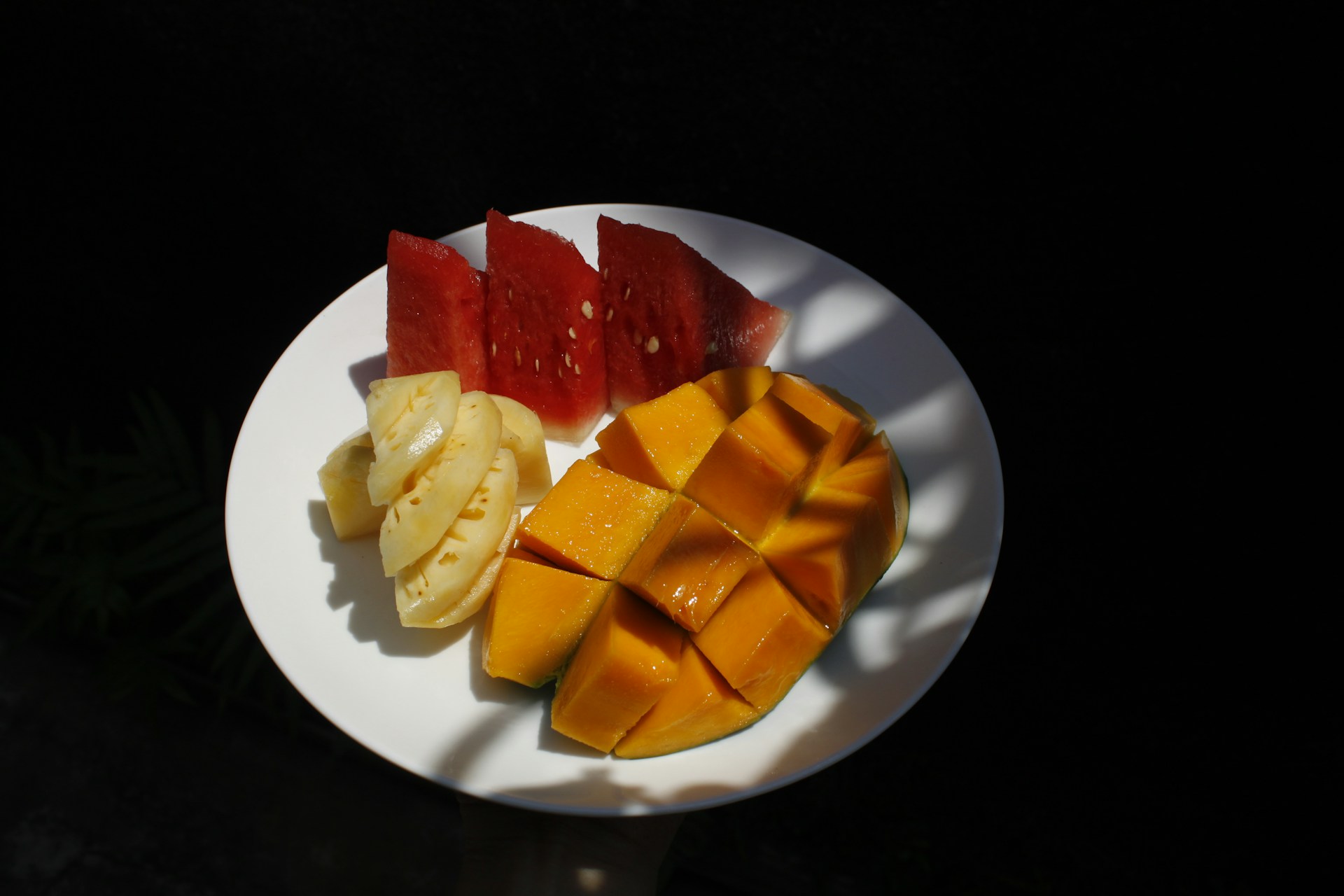Relationship between Carbohydrate, Protein, and Fat Consumption with Obesity Incidence in 2014 UKI Faculty of Medicine Students
Downloads
Background: Obesity is an excessive fat accumulation in the body. Excessive consumption of carbohydrates, protein, and fat can increase the risk of obesity. It occurs when there is an imbalance between the energy number that goes through food and the energy that comes out through physical activity.
Objectives: This study aimed to know the relationship between carbohydrate, protein, and fat consumption and obesity among the 2014 UKI Faculty of Medicine Students.
Methods: This study was analytical observational research with a case-control design. The samples were 68 students from batch 2014. The data are analyzed by SPSS using Chi-square and logistic regression.
Results: A total of 27.9% of students were obese, of which 33.3% were male and 25.5% were female. Based on the results of bivariate analysis, there was a significant relationship between obesity and protein consumption (p=0.048) and fat consumption (p=0.035), while there was no correlation between obesity incidence and carbohydrate consumption (p= 0.373).
Conclusions: The incidence of obesity in UKI Medicine Students batch 2014 was caused by the high consumption of fat and protein. It was not caused by the consumption of carbohydrates.
Piché, M.-E., Poirier, P., Lemieux, I. & Després, J.-P. Overview of Epidemiology and Contribution of Obesity and Body Fat Distribution to Cardiovascular Disease: An Update. Prog. Cardiovasc. Dis. 61, 103–113 (2018).
WHO. Noncommunicable Disease: Country Profiles 2018. World Health Organization (2016) doi:10.1002/9781119097136.part5.
Mary, S. & Stoler, A. Does Agricultural Trade Liberalization Increase Obesity in Developing Countries? Rev. Dev. Econ. 25, 1326–1350 (2021).
Ajayi, I. O. et al. Urban-rural and Geographic Differences in Overweight and Obesity in Four Sub-Saharan African Adult Populations: A Multi-Country Cross-Sectional Study. BMC Public Health 16, 1126 (2016).
Haththotuwa, R., Wijeyaratne, C. & Senarath, U. Worldwide Epidemic of Obesity. in Obesity and Obstetrics 3–8 (Elsevier, 2020). doi:10.1016/B978-0-12-817921-5.00001-1.
Arundhana, A. I., Utami, A. P., Muqni, A. D. & Thalavera, M. T. Regional Differences in Obesity Prevalence and Associated Factors among Adults: Indonesia Basic Health Research 2007 and 2013. Malays. J. Nutr. 24, (2018).
Daud, N. M. et al. Knowledge, Attitude and Practice Regarding Dietary Fibre Intake among Malaysian Rural and Urban Adolescents. Malays. J. Nutr. 24, 77–88 (2018).
Li, X. et al. Quantification of artificial sweeteners in alcoholic drinks using direct analysis in real-time QTRAP mass spectrometry. Food Chem. 342, 128331 (2021).
C.Y., T., S.R., A. & D.S.Q., K. Dietary habits and lifestyle practices among university students in universiti Brunei Darussalam. Malaysian J. Med. Sci. 25, 56–66 (2018).
Shah, T. et al. Assessment of obesity, overweight and its association with the fast food consumption in medical students. J. Clin. Diagn. Res. 8, CC05-CC7 (2014).
National Institute of Health Research and Development. National Report on Basic Health Research 2013. National Institute of Health Research and Development Ministry of Health Republic of Indonesia (2013) doi:1 Desember 2013.
Gopalakrishnan, S., Ganeshkumar, P., Prakash, M. V. S., Christopher & Amalraj, V. Prevalence of overweight/obesity among the medical students, Malaysia. Med. J. Malaysia 67, 442–444 (2012).
Pengpid, S. & Peltzer, K. Prevalence of overweight/obesity and central obesity and its associated factors among a sample of university students in India. Obes. Res. Clin. Pract. 8, e558–e570 (2014).
Pengpid, S. & Peltzer, K. Prevalence of overweight and underweight and its associated factors among male and female university students in Thailand. HOMO 66, 176–186 (2015).
Gunes, F. E., Bekiroglu, N., Imeryuz, N. & Agirbasli, M. Relation between eating habits and a high body mass index among freshman students: A cross-sectional study. J. Am. Coll. Nutr. 31, 167–174 (2012).
Salameh, P. et al. Assessment of dietary intake patterns and their correlates among university students in Lebanon. Front. Public Heal. 2, 1–12 (2014).
Yahia, N., Brown, C. A., Rapley, M. & Chung, M. Level of Nutrition Knowledge and Its Association with Fat Consumption among College Students. BMC Public Health 16, 1–10 (2016).
Kin-Kit Li et al. An Examination of Sex Differences in Relation to the Eating Habits and Nutrient Intakes of University Students. J. Nutr. Educ. Behav. 44, (2012).
Subhaluksuksakorn, P., Sinjariyanon, W. & Pimsaran, R. Gender Difference in Underweight, Overweight and Obesity among First-Year Students of Suranaree University of Technology in 2015. J. Med. Assoc. Thail. 99, S24–S29 (2016).
Hadi, A. J. et al. Consumption Pattern and Nutrition Conseling Roles on Obesity of Integrated Primary School Students. Unnes J. Public Heal. 8, (2019).
Hutahaean, G. D. M. Correlation between Meal Pattern and Physical Activity with Obesity among 5th and 6th Grade Students at Shafiyyatul Amaliyyah Elementary School. (University of Sumetara Utara, 2013).
Diana, R., Yuliana, I., Yasmin, G. & Hardinsyah. Risk Factors of Overweight among Indonesian Women. Indones. J. Nutr. Food 8, (2013).
Sasakabe, T., Haimoto, H., Umegaki, H. & Wakai, K. Association of decrease in carbohydrate intake with reduction in abdominal fat during 3-month moderate low-carbohydrate diet among non-obese Japanese patients with type 2 diabetes. Metabolism 64, 618–625 (2015).
Lin, Y. et al. Dietary animal and plant protein intakes and their associations with obesity and cardio-metabolic indicators in European adolescents: The HELENA cross-sectional study. Nutr. J. 14, 1–11 (2015).
Segovia-Siapco, G. et al. Animal Protein Intake Is Associated with General Adiposity in Adolescents: The Teen Food and Development Study. Nutrients vol. 12 (2020).
Lin, Y. et al. Plant and animal protein intake and its association with overweight and obesity among the Belgian population. Br. J. Nutr. 105, 1106–1116 (2011).
Schlesinger, S. et al. Food Groups and Risk of Overweight, Obesity, and Weight Gain: A Systematic Review and Dose-Response Meta-Analysis of Prospective Studies. Adv. Nutr. 10, 205–218 (2019).
Xu, F. et al. Effectiveness of a Randomized Controlled Lifestyle Intervention to Prevent Obesity among Chinese Primary School Students: CLICK-Obesity Study. PLoS One 10, e0141421 (2015).
Liu, R., Zhao, Y., Li, Q., Dang, S. & Yan, H. Body Fat Mass, Fat Distribution and Egg Consumption: a Population-Based Study in Chinese Adults: Egg consumption and Body Fat in Rural Chinese. J. Am. Coll. Nutr. 39, 528–536 (2020).
Hooper, L., Abdelhamid, A., Douthwaite, W., Skeaff, C. M. & Summerbell, C. D. Effect of reducing total fat intake on body weight: systematic review and meta-analysis of randomised controlled trials and cohort studies. BMJ (2012).
Phillips, C. M. et al. High Dietary Saturated Fat Intake Accentuates Obesity Risk Associated with the Fat Mass and Obesity–Associated Gene in Adults. J. Nutr. 142, 824–831 (2012).
Gharib, N. & Rasheed, P. Energy and macronutrient intake and dietary pattern among school children in Bahrain: a cross-sectional study. Nutr. J. 10, 62 (2011).
AlOudat, M., NorbertMagyar, LíviaSimon-Sarkadi & Lugasi, A. Nutritional Content of Ready-to-Eat Meals Sold in Groceries in Hungary. Int. J. Gastron. Food Sci. 24, (2021).
Copyright (c) 2022 Amerta Nutrition

This work is licensed under a Creative Commons Attribution-ShareAlike 4.0 International License.
AMERTA NUTR by Unair is licensed under a Creative Commons Attribution-ShareAlike 4.0 International License.
1. The journal allows the author to hold the copyright of the article without restrictions.
2. The journal allows the author(s) to retain publishing rights without restrictions
3. The legal formal aspect of journal publication accessibility refers to Creative Commons Attribution Share-Alike (CC BY-SA).
4. The Creative Commons Attribution Share-Alike (CC BY-SA) license allows re-distribution and re-use of a licensed work on the conditions that the creator is appropriately credited and that any derivative work is made available under "the same, similar or a compatible license”. Other than the conditions mentioned above, the editorial board is not responsible for copyright violation.












































